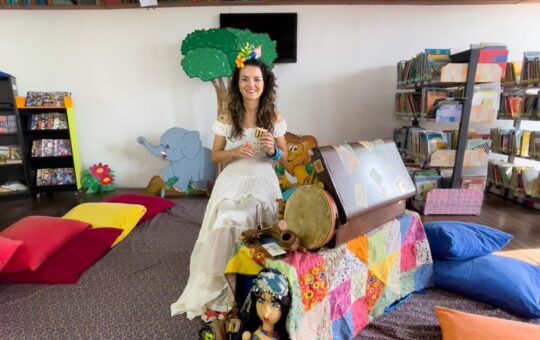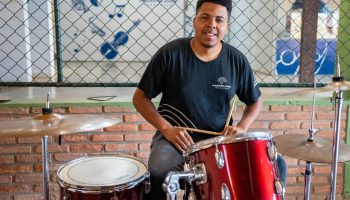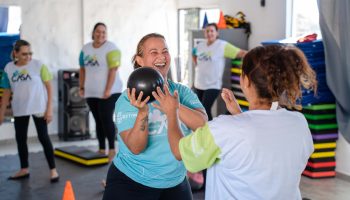Storytelling dates back a long time. Who doesn’t remember the stories around the campfire or even the bedtime stories?
This tool can awaken our senses, emotions and even interest in stories. But anyone who thinks that storytelling is the same thing as reading a book is wrong. It takes a lot of work and technique before narrating a story.
In today’s post, you can find out a little more about this art.
Before storytelling
“To do storytelling, you have to prepare yourself beforehand,” says Cleide Moura. She is the coordinator of the Ramacrisna Library and does storytelling for the Institute’s students.
Before narrating a story, you need to know the audience. That’s because it allows you to direct the themes, choose a suitable book for your age group and even think about costumes and accessories.
Cleide says that the characterization helps to hold the child’s attention. For this, it is not necessary a thematic costume that matches the theme of the book. “It can be a different hat, a full skirt, something that leaves the routine, to make the moment even more special“, she details.
For storytelling, you can use various accessories, such as musical instruments and puppets. But the only one that Cleide considers mandatory is the book.
“Having the book is fundamental. Even if I’m not reading it, I like to show that the book shows the story I’m telling,” she says..
That’s because storytelling can be very simple, for a small or large group. In these cases, the technique is to read the story showing the book, even without characterization.
Bringing the stories to life

The first step in storytelling is to study the narrative, what you consider most important and how you intend to tell it.
Another technique is to put songs in between storytelling. Because this, in addition to cheering, also draws the child’s attention – and the little ones love it. “History and music are arts that complete each other completely. And when it’s not for children, it’s the same effect for adults. It even shivers at the time and there’s music that matches the story very well,” says Cleide.
Before and during storytelling, it is also possible to play games with the children, show the book, ask if anyone already knows the story. Thus, in addition to interacting with the story, it also values the child’s reading.
Online storytelling
But so far, we’ve only covered face-to-face storytelling. Due to the pandemic, the storytelling of the Construindo o Futuro project is being recorded, published on the Ramacrisna channel and sent by WhatsApp to the families of children enrolled in the project’s partner day care centers.
In addition, 3 lives were held for children with storytelling, poetry readings and the creation of toys. Nana is responsible for the recordings and tells the main differences.
“In person, you see the child interacting, the little eye shining. And, in lives, it doesn’t have that. You have to do it with the same energy to deliver quality work, but you can’t tell if the child is interacting with you. So, at first, I found it kind of frustrating. But then I got used to it,” she says.
Check out some of the stories that have already been told in the lives of the Construindo o Futuro project.
The storyteller also highlights that storytelling encourages children to read, but that’s not all..
“Even if the child does not know how to read, it is interesting to encourage him to like books, stories and to believe in play. In the world of stories, anything can: tree speaks, animal speaks, house speaks. And that for the child is very powerful. When she is stimulated in this way, she becomes a much more confident and creative adult”
Reading Bag
In addition to face-to-face storytelling in the library, video recording and lives, they also take place during the delivery of the Reading Bag. This project consists of a suitcase with approximately 40 books and turns into a bookcase when opened.
The traveling library visits and encourages reading in institutions that do not have any kind of collection, such as public schools and community day care centers. The delivery of the suitcase is marked by party, with a theatrical performance, based on the books that make up the suitcase.
The Reading Bag project was started in 2010 and so far 95 bags have been delivered in the cities of Betim, Mateus Leme, Esmeraldas, Juatuba and Belo Horizonte.
You can help us continue this and other projects. Learn more about ways to donate.


